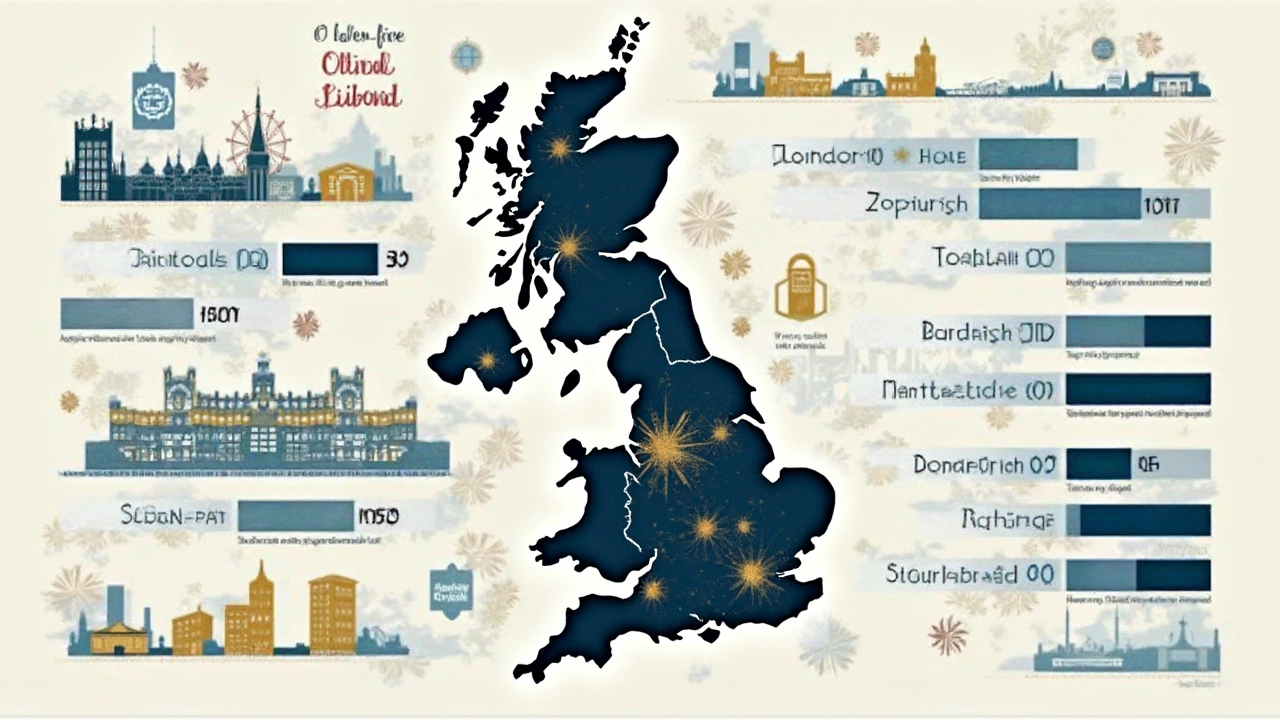You probably hear people throw around terms like "upper class" all the time, but hardly anyone agrees on exactly what the cutoff is. Here’s the simple answer: in the U.S., the upper class is usually defined as households earning more than double your area’s median income. That number changes a lot depending on where you live. In big cities like New York or San Francisco, you might need to pull in around $300,000 a year just to be considered upper class by local standards. In less expensive places, maybe $180,000 does the trick.
This isn’t just about bragging rights. Knowing where the upper class line lands can actually help you plan your investments, figure out if your current income is keeping up, or see what you’d need to boost your savings to the next level. Don’t worry about memorizing a single universal number. Instead, pay attention to the median incomes where you live and work from there—it’s a lot more accurate and way less stressful.
- What Counts as Upper Class Income?
- Why Place Matters: City vs. Suburbs
- How the Math Breaks Down
- Hidden Factors Besides Money
- Tips to Move Into the Upper Class Bracket
What Counts as Upper Class Income?
The most common way to figure out if you qualify as having an upper class income is by looking at your household income compared to others in your area. Usually, experts set the upper class mark at about two to three times the median household income.
So what does that mean in dollars and cents right now? Let’s break it down. Based on 2024 U.S. Census data:
| Area | Median Household Income | Estimated Upper Class Cutoff (2.5x) |
|---|---|---|
| United States (overall) | $75,000 | $187,500 |
| New York City | $90,000 | $225,000 |
| San Francisco | $125,000 | $312,500 |
| Dallas | $76,000 | $190,000 |
| Phoenix | $72,000 | $180,000 |
Of course, none of these numbers are magic gates. If you’re supporting a big family in a high-cost city, it takes a lot more to feel upper class than it does in a smaller town. Plus, sometimes the line moves depending on what bank or economist you ask.
There are also some quick checks you can use if you’re not sure where you land. Ask yourself:
- Is my household income at least twice the local median?
- Do I regularly have leftovers to invest or save after paying bills?
- Can I afford private school or travel without debt?
If you’re answering yes to those, there’s a good chance you’re in upper class territory—or at least on the doorstep. Just keep in mind, the finish line keeps moving with the cost of living, so what counts today might change tomorrow.
Why Place Matters: City vs. Suburbs
It’s wild how different the meaning of upper class income is depending on your zip code. In big cities, everything from groceries to gas costs more, so the income bar for "upper class" shoots up. Meanwhile, the same paycheck stretches way further if you’re out in the suburbs or smaller towns.
Check out these 2024 numbers for some perspective:
| City/Area | Median Household Income | Typical Upper Class Threshold |
|---|---|---|
| San Francisco, CA | $136,000 | $272,000+ |
| New York, NY | $85,000 | $170,000+ |
| Houston, TX (Suburb) | $63,000 | $126,000+ |
| Topeka, KS | $62,000 | $124,000+ |
The difference is obvious. Living in the heart of San Francisco means you’ll need over $270K to fit the upper class mold, while you only need half that in Topeka. The main drivers? Housing costs take the biggest chunk, but there’s also pricey private schools, transportation, and just daily life. It’s not just about what you earn—it's what you keep and spend in your location.
If you’re budgeting or thinking about a move, run the numbers where you actually live. Don’t compare your salary to Instagram strangers in Silicon Valley or Miami. Online calculators like Pew Research Center’s income calculator can help you see where you land based on your actual region and household size.
One more thing: if you’re house-hunting with an "upper class" lifestyle in mind, target your area’s numbers—not national headlines. The same salary can unlock a huge difference in lifestyle with just a short drive out of the city.

How the Math Breaks Down
If you’re trying to pin down what counts as upper class income, let’s cut through the noise. The typical way experts and researchers do this is by using the median household income for your area and multiplying it by two. The U.S. Census says the national median household income for 2024 was about $74,500. That means, nationally, anything above $149,000 could put you in the upper class bracket—but there’s a huge catch: location changes everything.
Here’s how it looks when you break it down by a few well-known cities:
| City | Median Household Income (2024) | Upper Class Line (2x Median) |
|---|---|---|
| New York, NY | $89,000 | $178,000 |
| San Francisco, CA | $126,000 | $252,000 |
| Dallas, TX | $77,500 | $155,000 |
| Miami, FL | $64,000 | $128,000 |
You see the pattern? The more expensive the city, the higher that upper class bar jumps. And keep in mind, this is just about income—before taxes. If you have kids or live in a place where housing eats up half your paycheck, that line might not feel all that “upper class.”
This isn’t just a math trick, either. Financial planners use this breakdown every day to help people understand where they sit on the ladder. The calculation is simple:
- Find your area’s median income (local government sites or the Census Bureau make it easy).
- Double it. That’s your area’s upper class cutoff.
If you’re in a spot where incomes or costs are out of control, you might need to adjust upward. Always look at after-tax (take-home) pay, too—that’s the money you can actually spend or invest.
Hidden Factors Besides Money
Guess what? Chasing an upper class income isn’t just about the amount you make. There are plenty of pieces to the puzzle that don’t show up on a tax return. Some families earning six figures still don’t feel upper class because of other money-draining pressures or lifestyle choices.
For starters, wealth builds up from investments, inheritance, and good financial habits—not just big paychecks. A 2023 Federal Reserve report said about 33% of people in the top 10% income bracket had most of their wealth in assets instead of cash from their jobs. That means access to stocks, property, and even family support can make a huge difference.
- Education: Degrees from elite schools or top connections can lead to opportunities and social circles regular income won't buy.
- Social Capital: Knowing the right folks or having family ties sometimes opens doors and deals you can’t easily reach otherwise.
- Location Advantage: Living in certain neighborhoods means better access to good schools and well-connected communities, which can help you (and your kids!) leap ahead—skills that go way beyond a paycheck. Take me: half my neighbors know each other’s business, and local connections have made work and child care a thousand times easier.
- Time: Having help—like a nanny or cleaner—can free up hours to invest, take on passion projects, or even get another advanced degree.
Some stats make this clearer. Check this out:
| Factor | Impact | Common Among Upper Class |
|---|---|---|
| Inherited Wealth | Major source of advantage | 44% (Pew Research 2024) |
| Private Education Access | Bigger chance at high-earning careers | 52% (Forbes Education 2023) |
| Professional Network | Easier access to top jobs | 61% (LinkedIn, 2023) |
The main point: income gets you in the door, but these hidden factors are what help people stay and move up in the upper class. If your endgame is true financial security or lasting wealth for your kids (I’m looking at you, Alaric and Thalia!), start building assets and connections—not just aiming for the next raise.

Tips to Move Into the Upper Class Bracket
If you’re eyeing that upper class income jump, it helps to know where your money should be going. Hitting this bracket isn’t just about a big salary—it’s usually a combo of growing your income and investing smartly over time. Here’s how regular folks break into that next level:
- Polish Your Skills: People who reach higher income brackets almost always keep learning. Whether it's picking up a tech certification or getting an MBA, boosting your qualifications means bigger paychecks. For example, the U.S. Bureau of Labor Statistics reports that people with a master’s degree earn about $12,000 more each year than those with just a bachelor’s.
- Start a Side Hustle: Extra income streams can add up fast. Think freelancing, consulting, or even investing in real estate. Plenty of upper class households have more than one earner or source of cash coming in.
- Invest Early and Regularly: The earlier you start putting money in the market, the more you’ll earn from compounding. Just look at this table for how much $500 invested monthly can turn into over time with an average 7% annual return:
| Years Investing | Total Contributions | Estimated Value |
|---|---|---|
| 10 | $60,000 | $84,000 |
| 20 | $120,000 | $246,000 |
| 30 | $180,000 | $566,000 |
- Control Lifestyle Inflation: It’s tempting to upgrade your life with every raise, but keeping your spending stable while your income climbs will help you hit upper class status faster. Living below your means leaves more to invest.
- Network Strategically: So many high earners get there by being part of the right circles—think who you know, not just what you know. Join industry groups, head to conferences, and don’t be shy about making professional connections.
The truth: nobody slides into a high salary by accident. It’s a mix of small, smart moves and sticking with them. Focus on steady progress rather than trying to score a windfall overnight, and you’ll be surprised how close you can get to that bracket.
